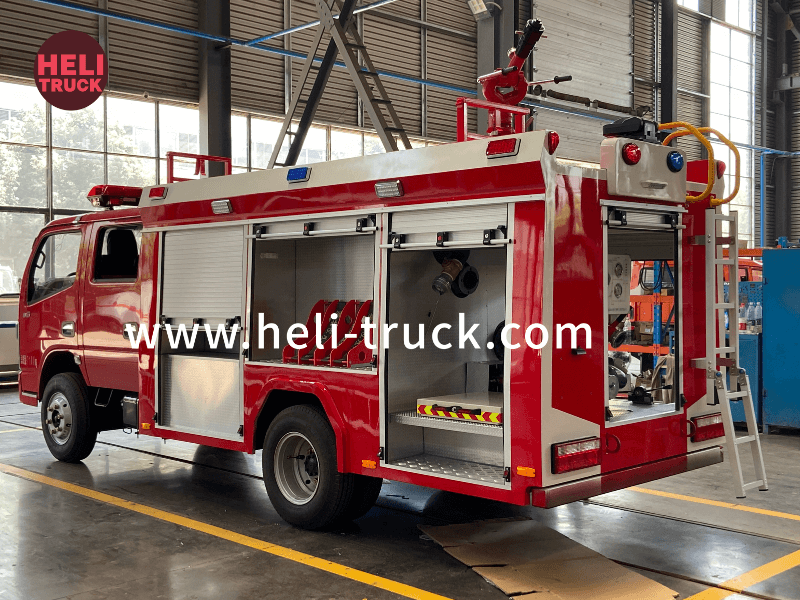Introduction
Garbage compactor trucks play a vital role in the waste management industry, helping to collect and transport municipal solid waste from homes, businesses, and public spaces to disposal sites. These specialized vehicles are equipped with compactors that compress the waste, allowing for more efficient loading and maximizing the truck's carrying capacity. In this article, we will explore the importance of garbage compactor trucks with efficient loading and how they contribute to a more sustainable waste management system.
Overview of Garbage Compactor Trucks
Garbage compactor trucks, also known as refuse compactors or waste compactors, are specifically designed to collect and transport solid waste. made a post come in various sizes and configurations, ranging from small rear-loading compactors for residential areas to large front-loading or side-loading compactors for commercial and industrial use. The key feature of these trucks is the compactor mechanism, which compresses the waste to reduce its volume and increase the payload capacity of the vehicle.
Efficient Loading Mechanisms
Efficient loading mechanisms are essential for maximizing the capacity and productivity of garbage compactor trucks. These mechanisms are designed to streamline the waste collection process, reduce manual labor, and optimize the use of available space within the truck's storage compartment. Some of the common types of loading mechanisms used in garbage compactor trucks include:
1. Rear-loading compactors: Rear-loading compactors are commonly used for residential waste collection. These trucks are equipped with a hydraulic lifting mechanism that raises and tips the waste container into the compactor. The compactor then compresses the waste, allowing for more efficient loading and minimizing the number of trips required to transport the waste to the disposal site.
2. Front-loading compactors: Front-loading compactors are typically used for commercial and industrial waste collection. These trucks feature a front-loading hopper that allows waste containers to be emptied directly into the compactor. The waste is then compacted and pushed to the rear of the truck, maximizing the storage capacity and reducing the frequency of trips to the disposal site.
3. Side-loading compactors: Side-loading compactors are commonly used in urban areas and tight spaces where maneuverability is limited. These trucks feature a side-loading mechanism that allows waste containers to be emptied from the side of the truck. The waste is then compacted and stored in the rear compartment, ensuring efficient loading and optimal use of space.
Benefits of Efficient Loading
Garbage compactor trucks with efficient loading mechanisms offer a range of benefits for waste management operations and the environment. Some of the key benefits include:
1. Increased capacity: Efficient loading mechanisms allow garbage compactor trucks to carry more waste per trip, reducing the number of trips required to transport the waste to the disposal site. This helps to improve the productivity and efficiency of waste collection services.
2. Reduced labor costs: By automating the loading process and minimizing the need for manual labor, efficient loading mechanisms help to reduce labor costs and improve the overall efficiency of waste collection operations.
3. Environmental impact: Maximizing the capacity of garbage compactor trucks helps to reduce the carbon footprint associated with waste transportation. Fewer trips mean lower fuel consumption and emissions, contributing to a more sustainable waste management system.
4. Improved safety: Efficient loading mechanisms help to streamline the waste collection process and reduce the risk of injuries to waste collection workers. By minimizing manual handling of waste, these mechanisms create a safer working environment for workers.
Case Studies
Several municipalities and waste management companies have successfully implemented garbage compactor trucks with efficient loading mechanisms to improve their waste collection operations. One such example is the city of San Francisco, which has adopted a fleet of front-loading compactors to collect commercial waste in the downtown area. By using these trucks, the city has been able to increase the capacity of its waste collection services and reduce the number of trucks on the road, leading to cost savings and environmental benefits.
Another case study is Waste Management Inc., a leading waste management company that has invested in rear-loading compactors for residential waste collection. By using these trucks, Waste Management has been able to streamline its waste collection operations, reduce labor costs, and improve the overall efficiency of its services. The company has reported significant fuel savings and emission reductions as a result of using garbage compactor trucks with efficient loading mechanisms.
Future Trends and Innovations
As the waste management industry continues to evolve, new trends and innovations are emerging in the design and technology of garbage compactor trucks. Some of the future trends to watch out for include:
1. Smart loading systems: Advances in sensor technology and automation are enabling the development of smart loading systems for garbage compactor trucks. These systems can optimize the loading process, monitor waste levels, and provide real-time data to improve operational efficiency.
2. Alternative fuels: With a growing focus on sustainability and environmental protection, there is a rising interest in using alternative fuels for garbage compactor trucks. Electric and hybrid vehicles are becoming more prevalent in the waste management industry, offering a cleaner and more sustainable option for waste collection operations.

3. Integration with digital platforms: Digital platforms and software solutions are being integrated into garbage compactor trucks to enhance communication, route optimization, and data management. These technologies help waste management companies to better track and monitor their fleet, improve customer service, and reduce operational costs.
Conclusion
Garbage compactor trucks with efficient loading mechanisms play a crucial role in modern waste management systems, offering a range of benefits for municipalities, waste management companies, and the environment. By maximizing capacity, reducing labor costs, and minimizing environmental impact, these trucks help to streamline waste collection operations and contribute to a more sustainable and efficient waste management process. As the industry continues to evolve, new trends and innovations are expected to further enhance the performance and capabilities of garbage compactor trucks, ensuring a cleaner and healthier environment for future generations.
